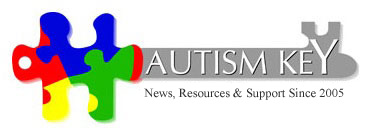Autism Science Breakthroughs and Personal Qualms
The Australian reports that researchers have identified two biologically different strains of autism, a breakthrough likened to the discovery of different forms of cancer in the 1960s.
Researchers from the University of California Davis’s MIND Institute in Sacramento began the Autism Phenome Project, a longitudinal autism study undertaken in 2006. By studying the brain growth, environmental exposure and genetic make-up of 350 children aged between 2 and 3.5 years, they uncovered two biologically distinct sub-types of autistic brain development.
One group comprised entirely of boys, had enlarged brains and most of the subjects had regressed into autism after 18 months of age. The second group, whose sex was unidentified, appeared to have compromised immune systems.
Research leader and Psychiatry professor David Amaral hopes the findings will lead to more individualized treatment. For instance, if a child has an immune form of autism, manipulating the immune system would be of primary concern. Similarly, focusing on the synaptic functions in the enlarged brain typical of the second strain of autism identified would take precedence.
Amaral predicts that they will discover as many kinds of autism as there are forms of cancer. The recent findings are seen as a key to understanding the causes of autism, developing appropriate and effective treatments, and arriving at a cure.
Another scientific story coming from Australia is that researchers are close to being able to offer new screening tests for unborn babies by which likelihood of autism can be established prenatally. Senior Research Fellow Dr. Andrew Whitehouse of Telethon Institute for Child Health Research remarked, “What we hope to do is identify risk factors or biological markers that may tell us this fetus could be at increased risk of autism later in life so we can increase the monitoring of that child after birth.
While these stories are seemingly good news, they both give me reason to pause. One can only hope that treatment protocols experience breakthroughs at the same rate as research. My son with autism also has Crohn’s, an autoimmune disease. In the hospital, his doctors’ idea of “manipulating the immune system” was to shut it down with Remicaid, a powerful, lifelong chemotherapy course known to induce rheumatoid arthritis and lymphoma frequently enough that it carries a black box warning.
At some peril we escaped that fate. Two years later, his Crohn’s is in remission through diet, supplements and LDN, a cream that is rubbed into the skin, serving to regulate the immune system. While he is at his healthiest ever, his treatment plan is considered radical, even subversive by the vast majority of doctors.
In the future, I can see different strains of autism being treated like cancer – powerful drugs attacking the problem. Except autism isn’t cancer and many people feel it to be an alternate reality rather than something to be eradicated.
Which brings us to the in utero screening for autism. How can this not spell pregnancy terminations for worried would be parents?
My conclusion is that we are perched on top of a very slippery slope in which “progress” will be judged subjectively by all the autism stakeholders.

